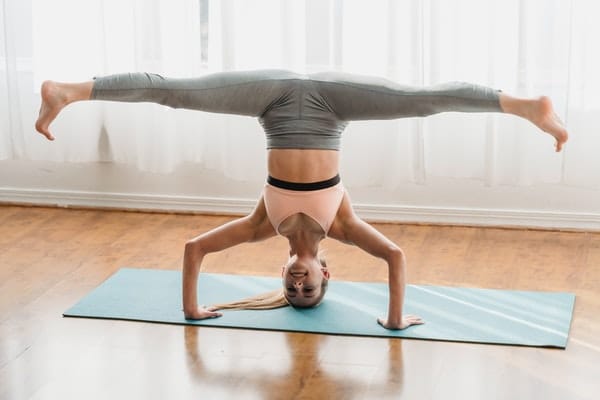
Flow Yoga Provides Strength and Well-being with Physical and Mental Benefits
Vinyasa (or “Flow”) yoga links common postures with calculated breathing exercises for physical and mental benefits, forming a tremendous anti-stress strength training regimen.
Vinyasa “Flow” yoga is the act of connecting various yoga poses to form a continuous stream of motion that stresses the link between postures and breathing (and, therefore, the body with the mind). Unlike some forms of yoga, Vinyasa leaves room for variety—how it is implemented depends on the teacher’s style. The commonality in different teaching methods lies in the unification of movement and breath as the flow of one pose to the next is stimulated with an inhale of breath. Often a faster-paced practice, many “power yoga” classes incorporate elements of strength training with Vinyasa practice.
Physical Benefits
Any type of yoga will improve your physical health by assisting you in gaining balance and flexibility. You will feel an improvement in stamina and endurance while practising Vinyasa. As a result of daily yoga practice, one’s muscles strengthen and stretch, and the body heals itself.
Increased stamina results in better balance and coordination. Stretching, strengthening, and breathing methods rejuvenate the body and improve its capacity to recover. Higher body heat and energy result in looser muscles and increased blood flow, which transports oxygen to critical organs for rejuvenation.
Emotional Benefits
While regular yoga practice revitalizes the physical body, it also refreshes the mind. Breathing methods that assist you in regaining control and equilibrium over your body also help focus on your emotional well-being. As you gain conscious control over your body and breathing, you get a greater awareness of your body’s limitations and possibilities. Allowing yourself to put the time aside for regular yoga practice will calm tension in your muscles, lower anxiety and reduce depressive tendencies. An improved sense of calmness filters into the rest of your life behind the yoga class.
Concentrating on the core breathing of your body brings the focus to your inner being and away from the outside world, including any distractions that may plague your life outside of yoga. Beyond the yoga session, an enhanced feeling of calm pervades your life. This self-awareness can combat anti-depression and increase motivation as you feel a closer connection to the way your body functions.
These two kinds of benefits—physical and mental—coexist and mutually reinforce one another: As you emotionally relax, your muscles physically relax, and you open up new possibilities for your body. Physical exercise helps you become more sensitive on the inside, fostering the growth of mental awareness.
Popular Sequences
These famous sequences of poses are common in the practice of Vinyasa because of the natural flow between movements:
- Standing Pose Sequence: Downward facing dog, Lunge, Warrior I, Warrior II, extended side angle, Triangle, Half moon, and back to Downward facing dog
- Sun Salutation Sequence: When teachers tell the class to “go through their vinyasa,” they refer to the sun salutation sequence that varies but usually flows as such: downward-facing dog to plank position, forward into cobra and back to downward facing dog.
Don’t Forget
Because Vinyasa is a strength-training form of yoga, always keep former injuries in mind, be aware of your physical limitations and what your body can handle. When considering any new exercise regimen, consult your doctor. Drinking the prescribed daily amount of water will prevent dehydration during your workout. The majority of sessions last between 45 and 90 minutes and begin with sun salutations and standing postures before moving on to various other types of poses and concluding with a meditation series.